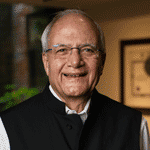
Repair economy can help India fight its climate burden


Intense heatwaves with temperatures over 45°C have seared India this summer. The worst-hit have been the working poor confined to tasks that can only be done outside. We are all now too familiar with weird weather events happening due to climate change across different geographies at different times. The UN’s apex climate science body, the Intergovernmental Panel on Climate Change (IPCC), in its latest report, makes it clear that the world is short of time on climate action. As per the report, in order to keep global heating to below 1.5°C above the baseline levels of 1850, fresh global emissions have to start declining by 2025, and get close to zero by 2050. We need to encourage much greater innovation for a lighter carbon footprint.
A circular economy that’s focussed on repair is one way to plot India’s climate burden fight, enhance resource security, decrease the energy load, heal the planet, and open avenues for green jobs as well. As opposed to a linear economy, a circular or a repair economy focuses on rebuilding back, extracts fewer virgin materials, and less waste makes it to the landfills. The challenge is to make the reverse logistics of repair, scalable and profitable, and to creatively involve the unorganised informal sector that’s so far doing most of India’s repair work. A study by Ellen MacArthur Foundation points out that a circular economy in India will bring an annual benefit of Rs 40 lakh crore by 2050, and reduce GHG emissions by 44 per cent.
Govt rules

There is a greater governmental push towards such sustainability ideas now. The new Securities and Exchange Board of India (SEBI) rules that kick in from April 1 this year, establish environmental, social and governance (ESG) parameters for India Inc. The government has notified various statutes that encourage circularity and repair like the Extended Producer Responsibility, e-Waste Management Rules, Metals Recycling Policy, and so on. Policy instruments that encourage repair as a right helps economies and the planet, encourage thrift and ensures material longevity. Many global giants in Electronics have been known to encourage monopoly in repair and make products that are either unserviceable anywhere else, or end up as waste as no repair is available at all. To make it truly viable, such thinking (like that of repair, longevity of products or circularity and e-waste management) must go beyond the mandatory CSR compliances, and be embedded in our culture of work, remodelling linear input-output manufacturing, and optimising material usage through better product design and service responsibilities.
Saving resources
There is a lot of talk on green energy now. The World Bank’s Minerals for Climate Action report points out that a transition to clean energy will deplete minerals, that are limited in supply. For instance, solar photovoltaic (PV) technology requires minerals like aluminium and silver while wind turbines need steel and rare elements like neodymium. A long-term solution therefore is to encourage conservation, circularity, repair, reuse and recycling as far as possible. By encouraging repair, we are saving resources to put them in use where they will be needed more.

Digital pathways
The digital sector ensured continuity in difficult times, and it’s now impossible to visualise any industry without it. It has the onus to not only get things to work but also to encourage sustainability, and clear some bottlenecks. For instance, the increased switch to digital and electronics is leading to the problem of e-waste. As per the UN global e-waste Monitor 2020, a record 53.6 million metric tonnes (Mt) of electronic waste was generated globally in 2019, up 21% in just five years. Such e-waste comprises hazardous substances such as lead and mercury and also iron, steel, copper, and aluminium that can be moved to recycling plants. Leveraging digital technology for reverse logistics could bring in greater value creation for a repair economy.
However, to beat throwaway consumptive societies, we must also design lovable objects that last. Singed by the covid aftermath, as we build back, material repair offers hope, mending products as well as the planet. Francisco Martínez, an ethnographer at the University of Helsinki, points out that repairing a product generates a deep sense of care, pride, belonging and civic participation, and is therefore therapeutic. To counter the adverse effects of climate change, it’s imperative to act with greater compassion for the planet—and the rewards of the larger goal will be for all to savour. Repair is one such compassionate move that’s good for all.


Ajai Chowdhry
Ajai Chowdhry is the Chairman of Epic Foundation and Founder of HCL.
